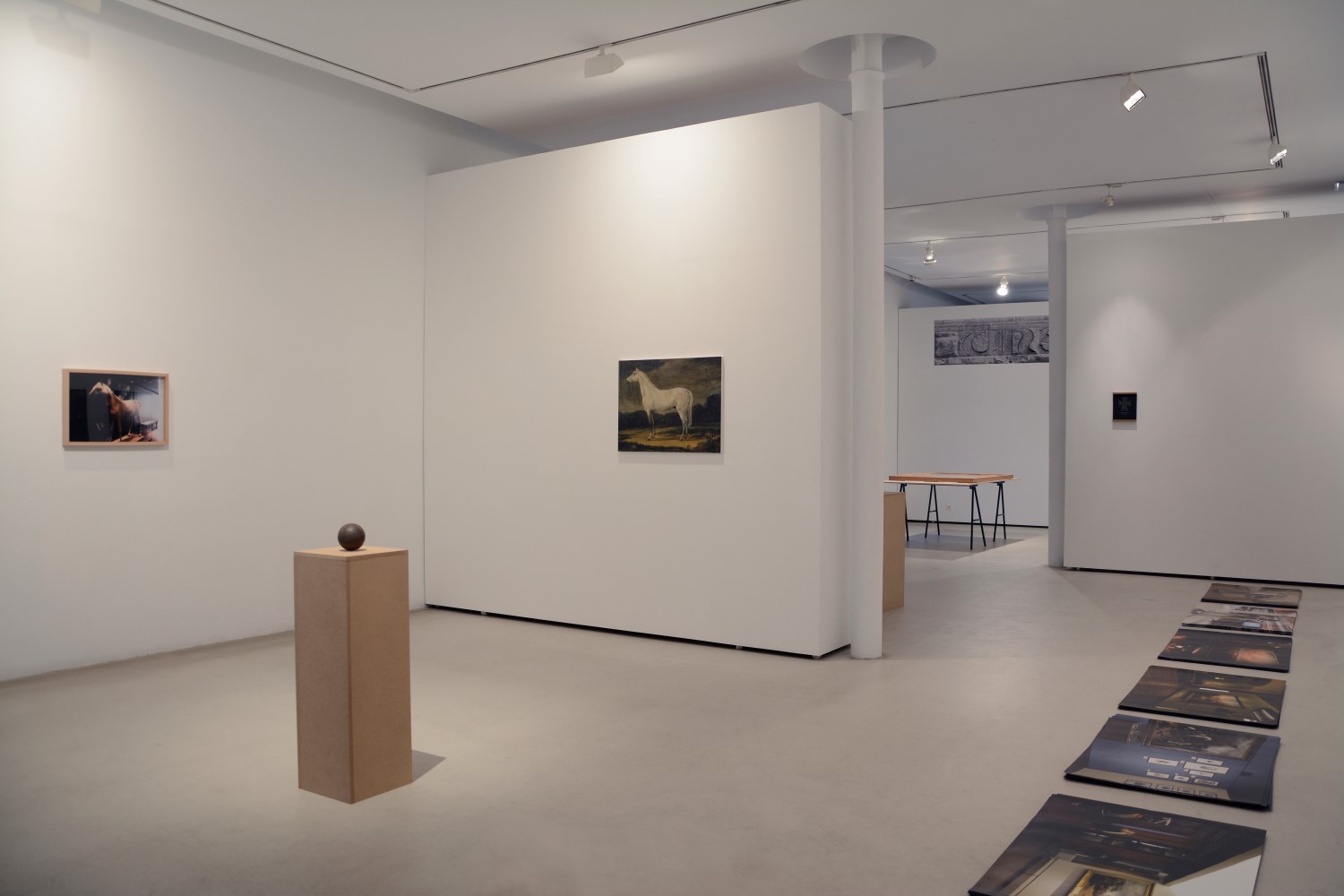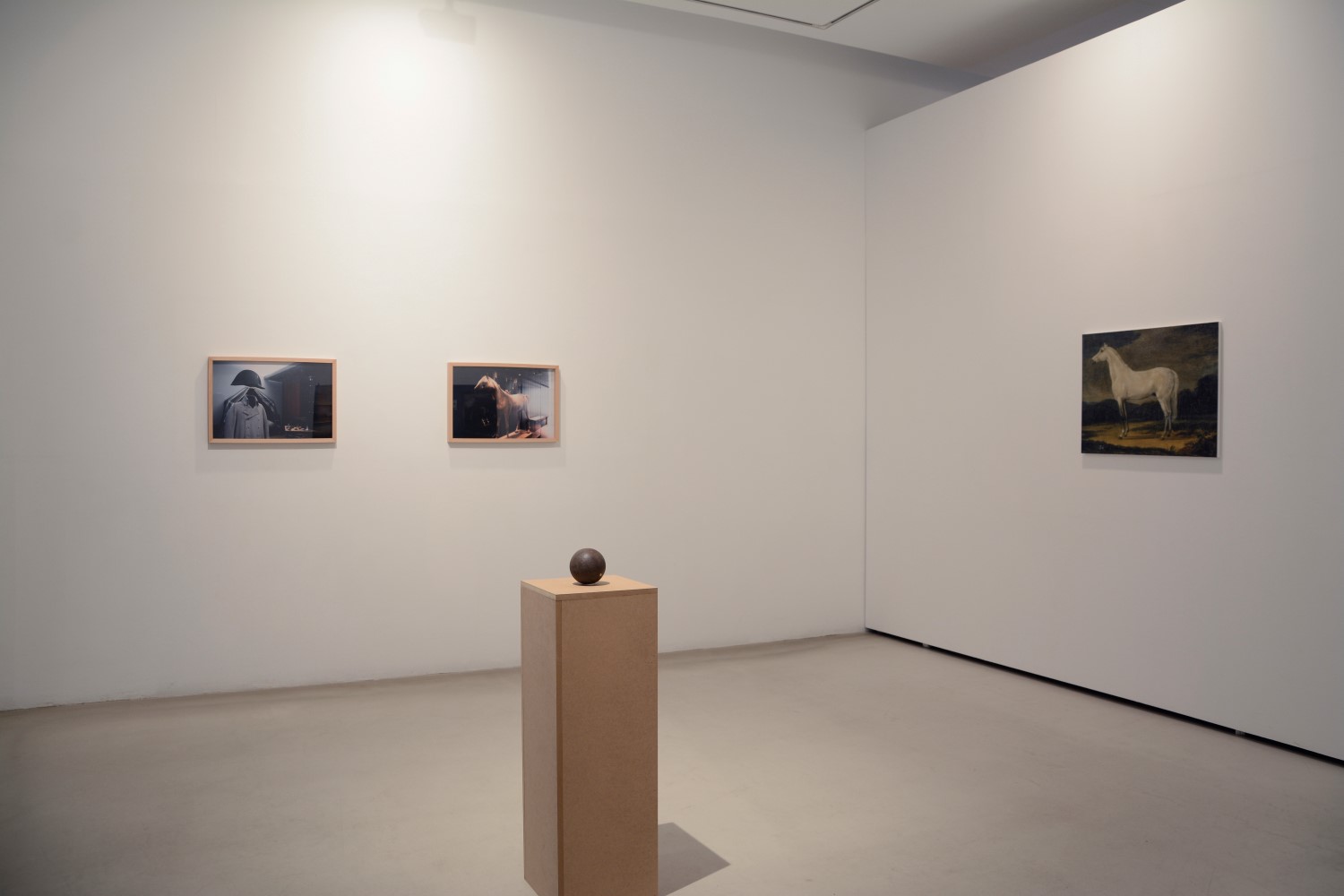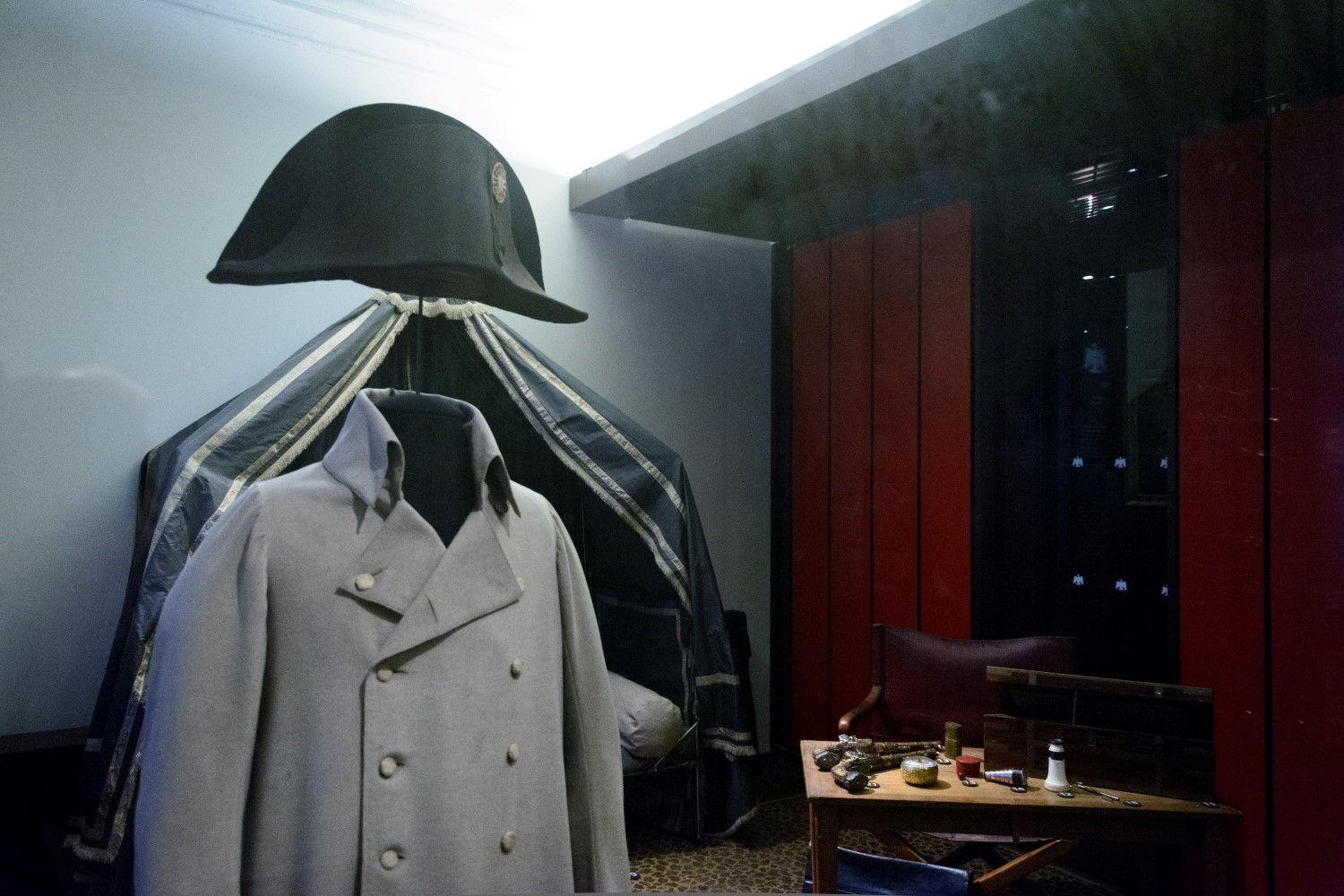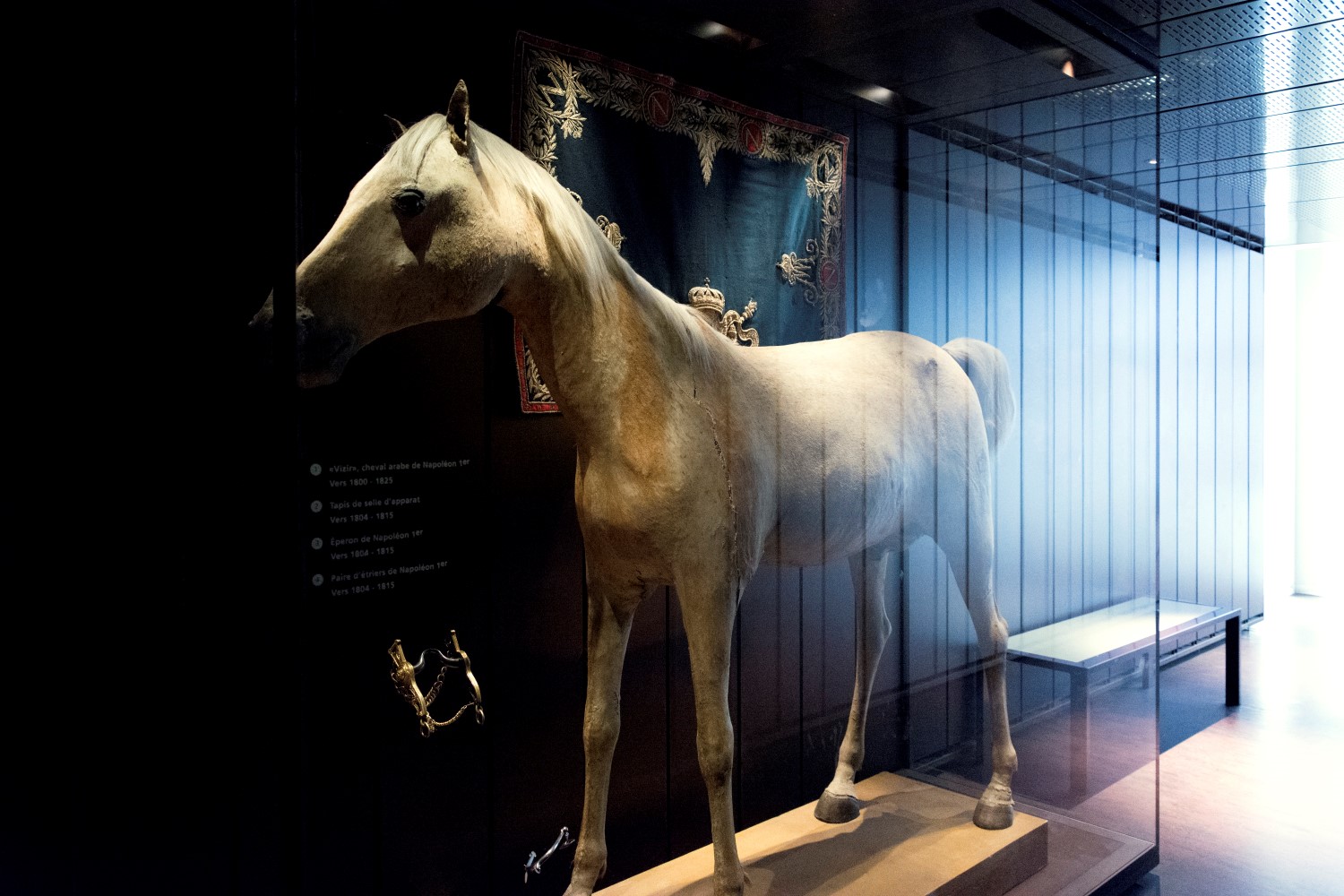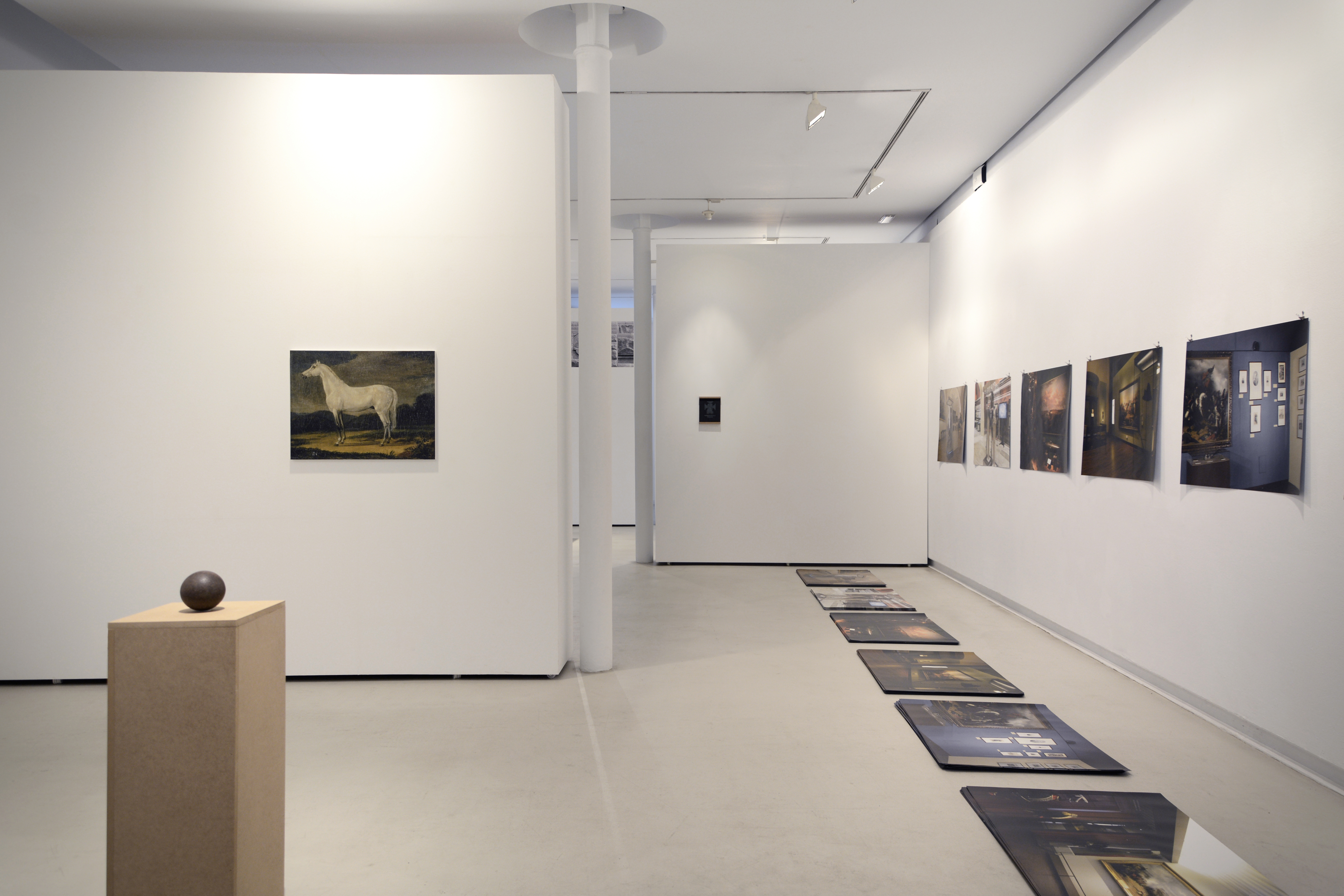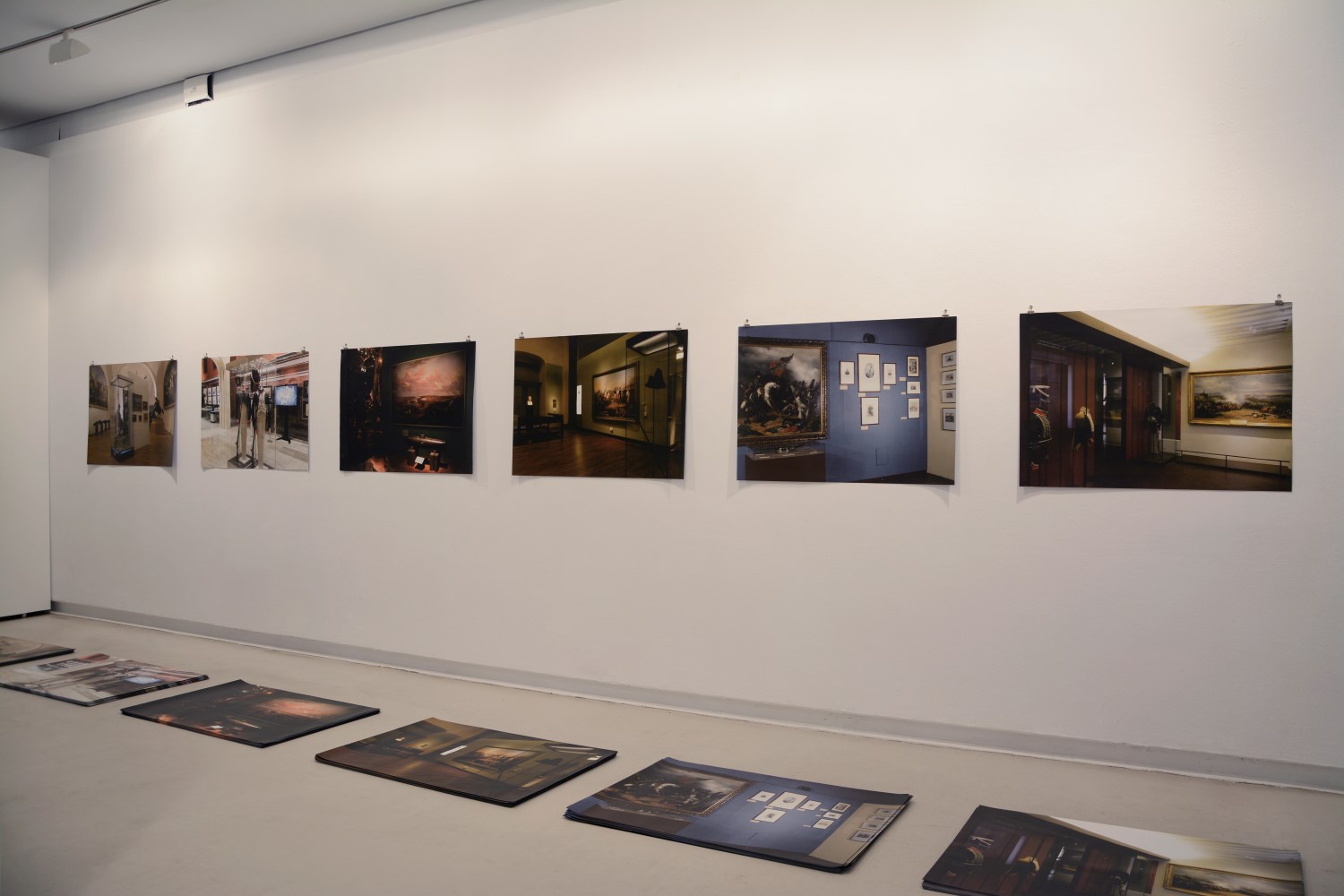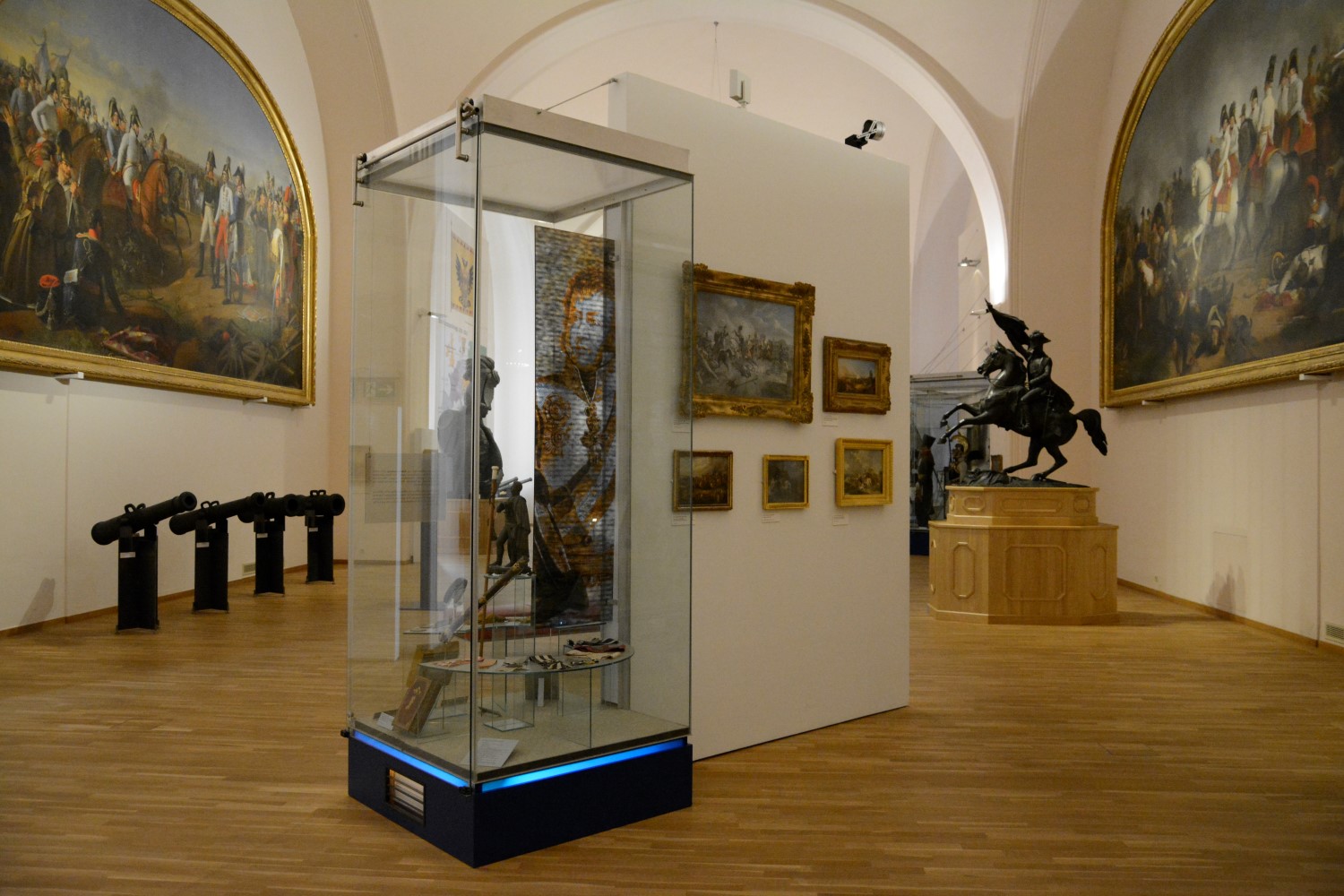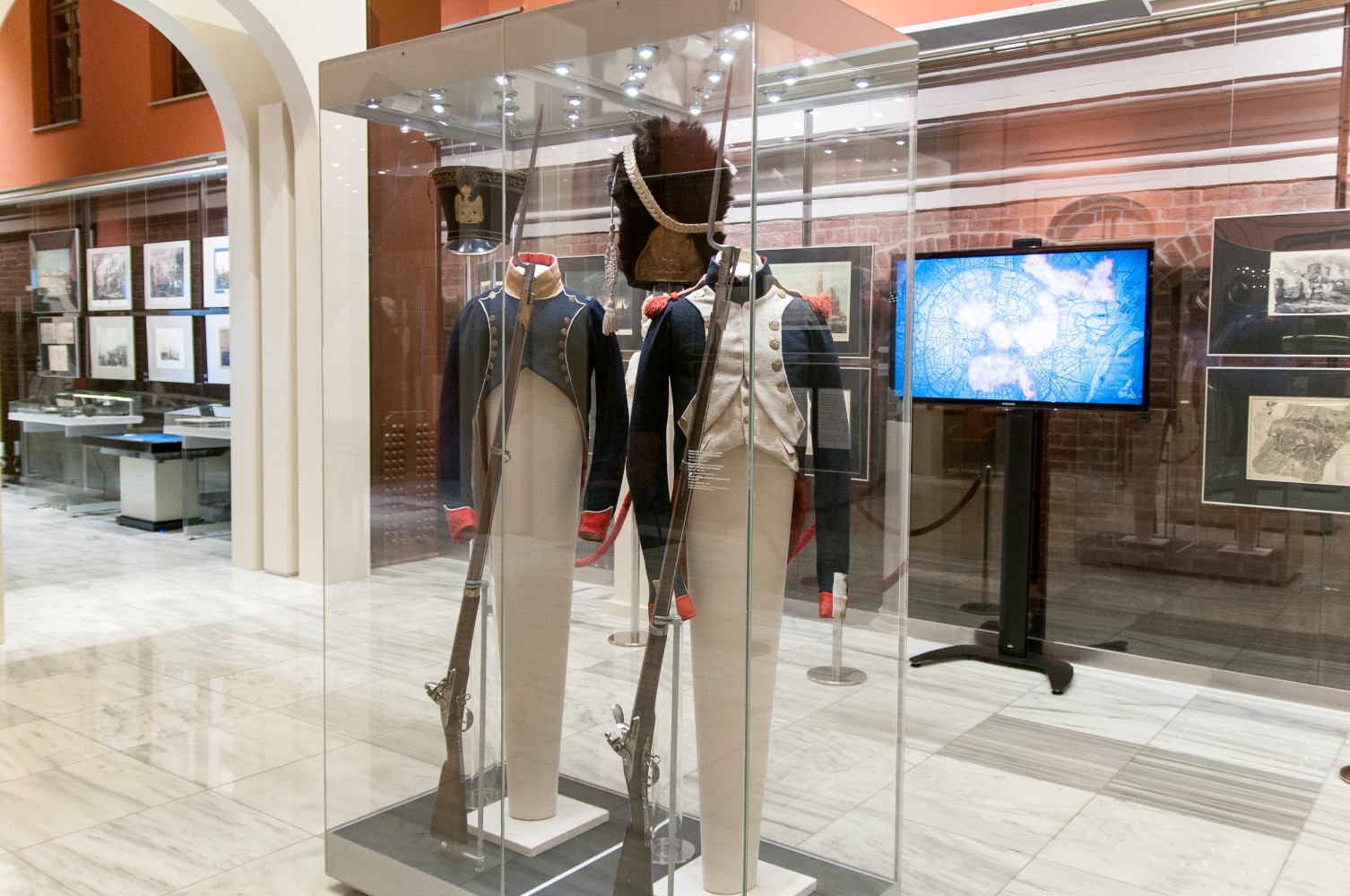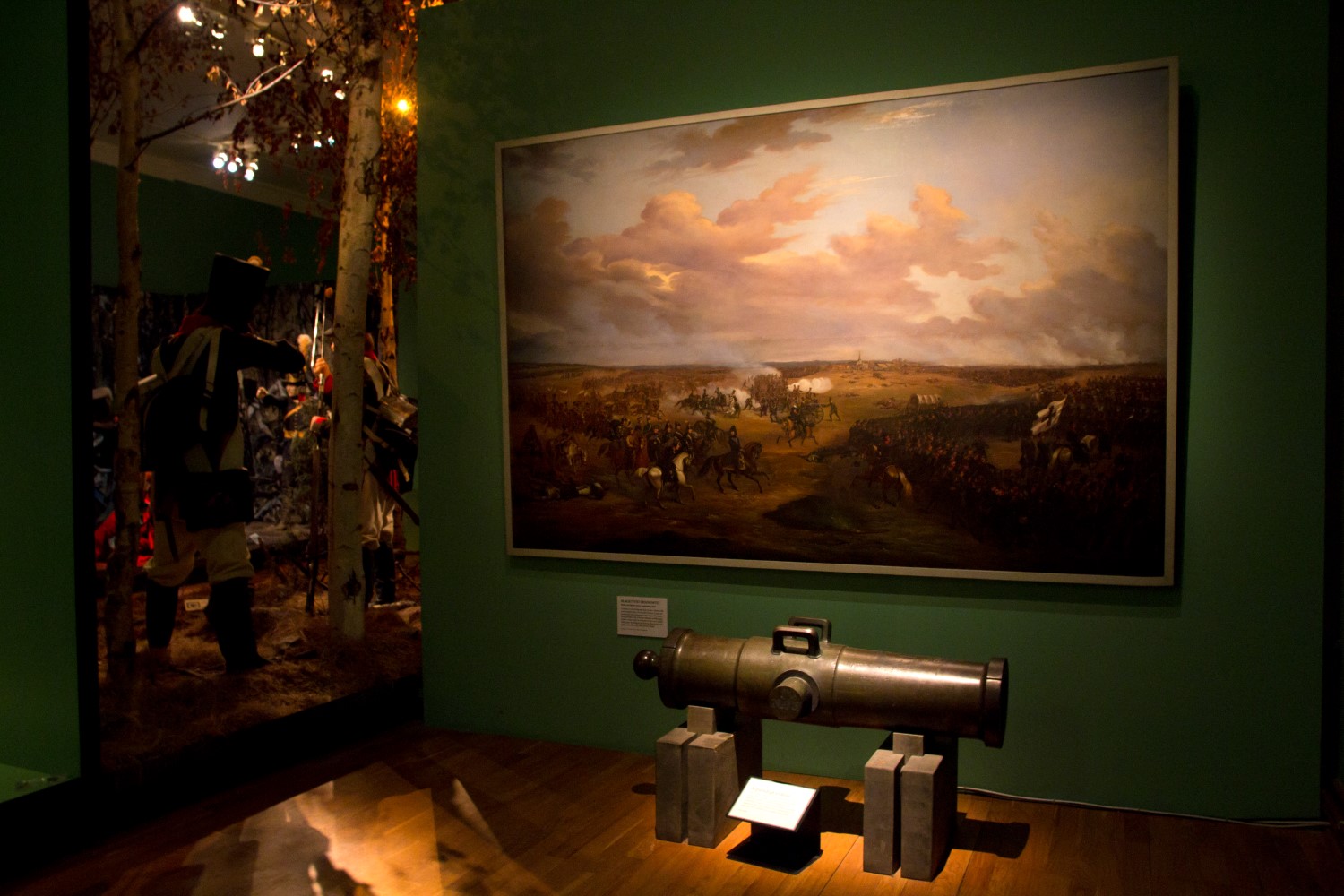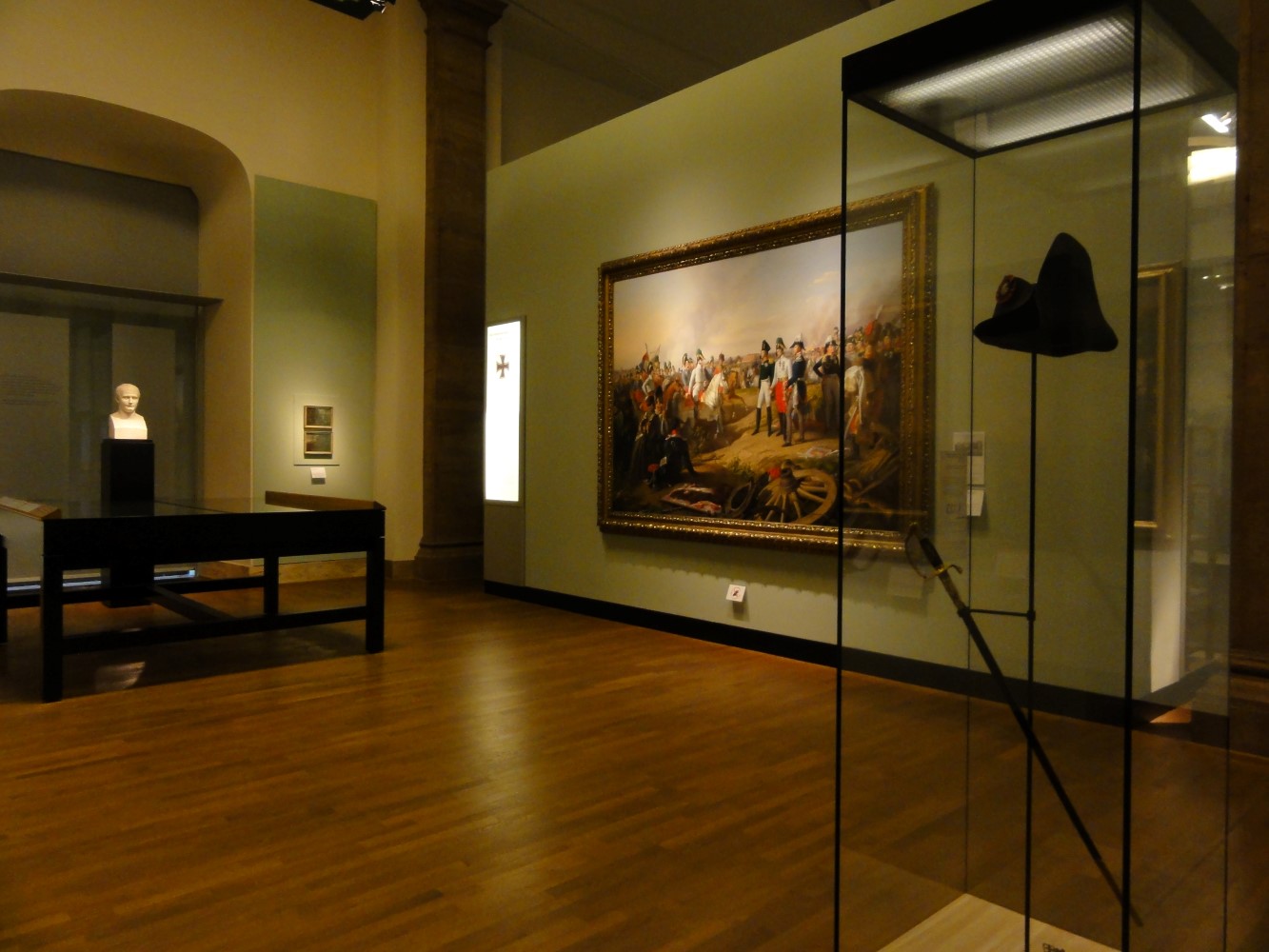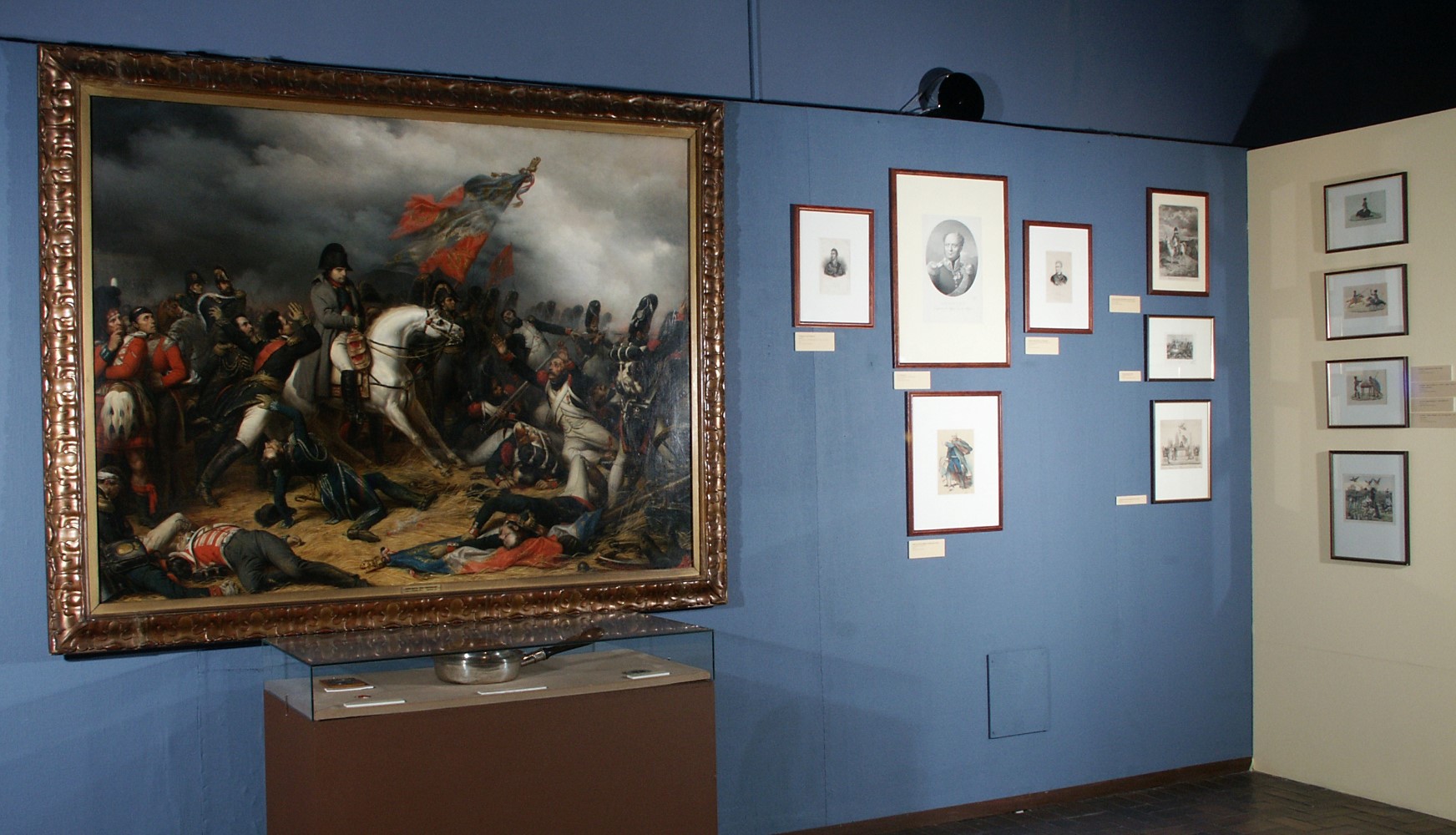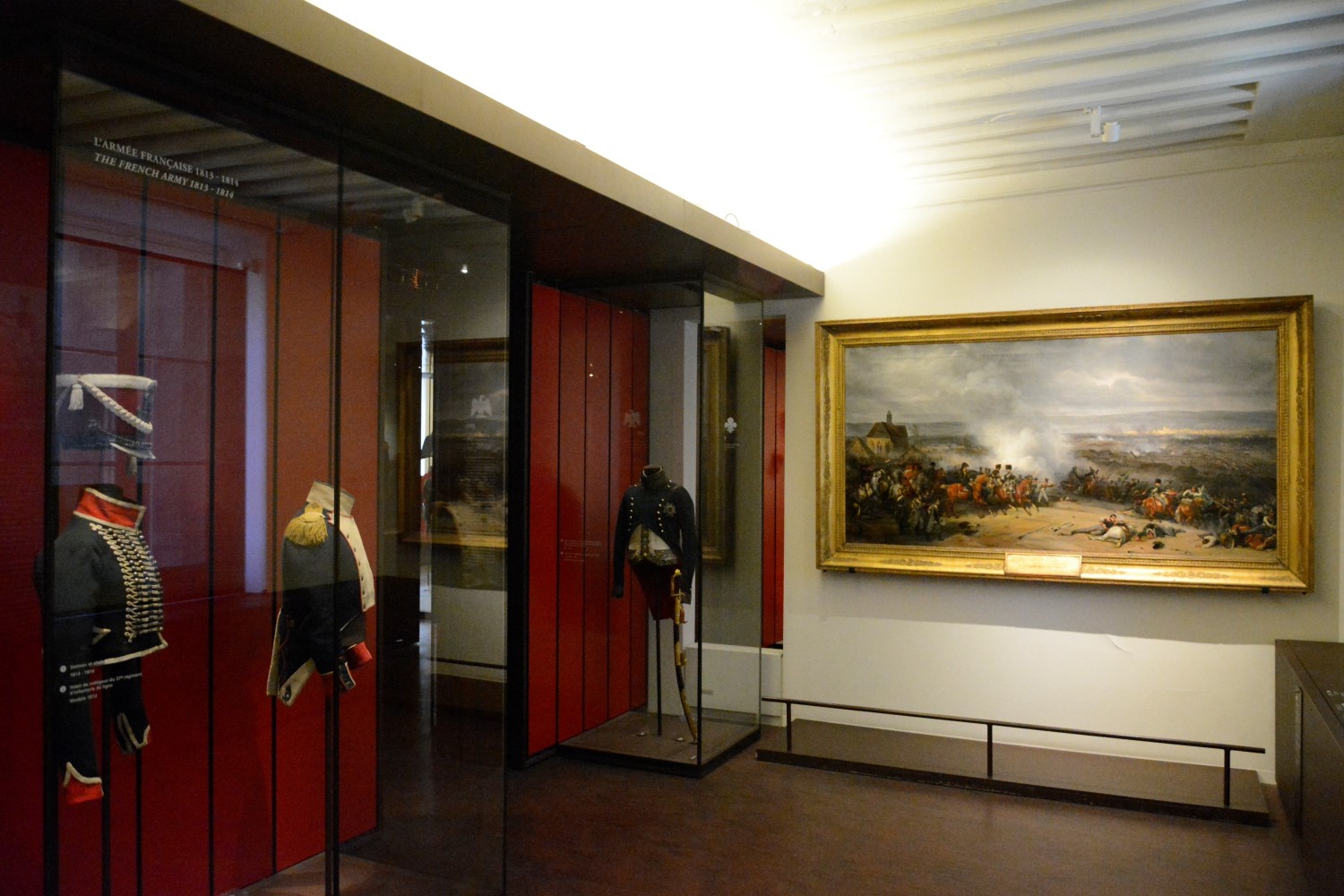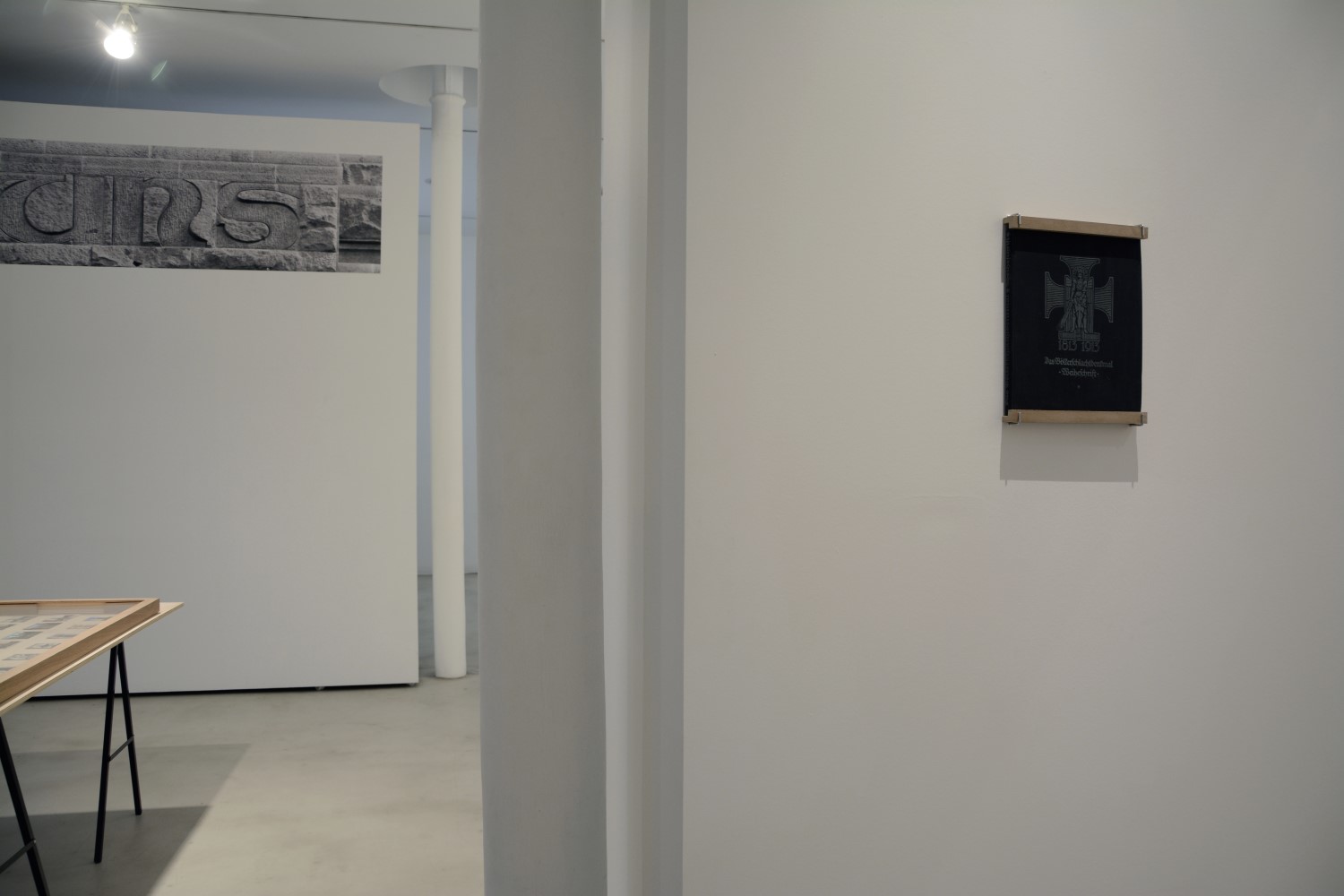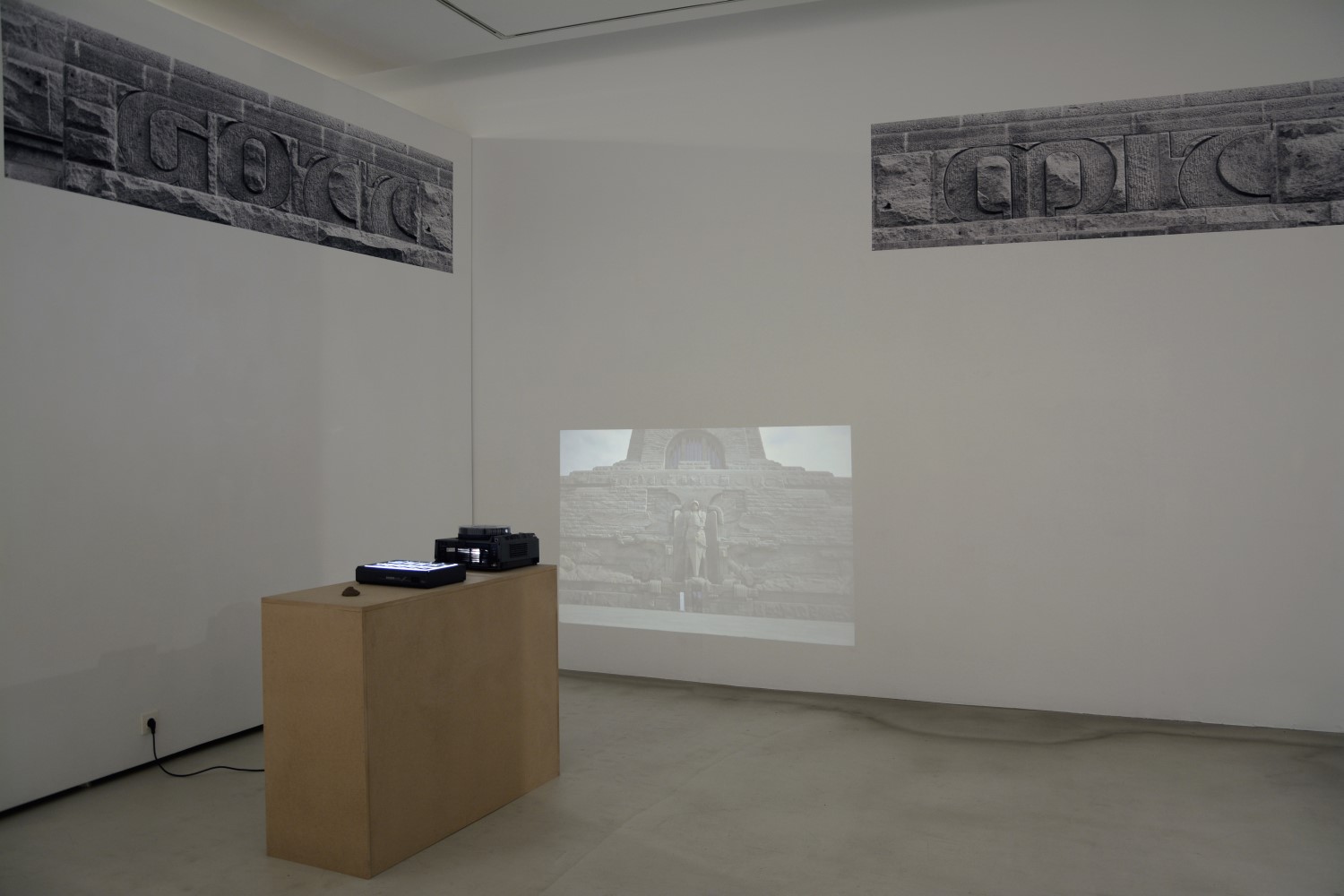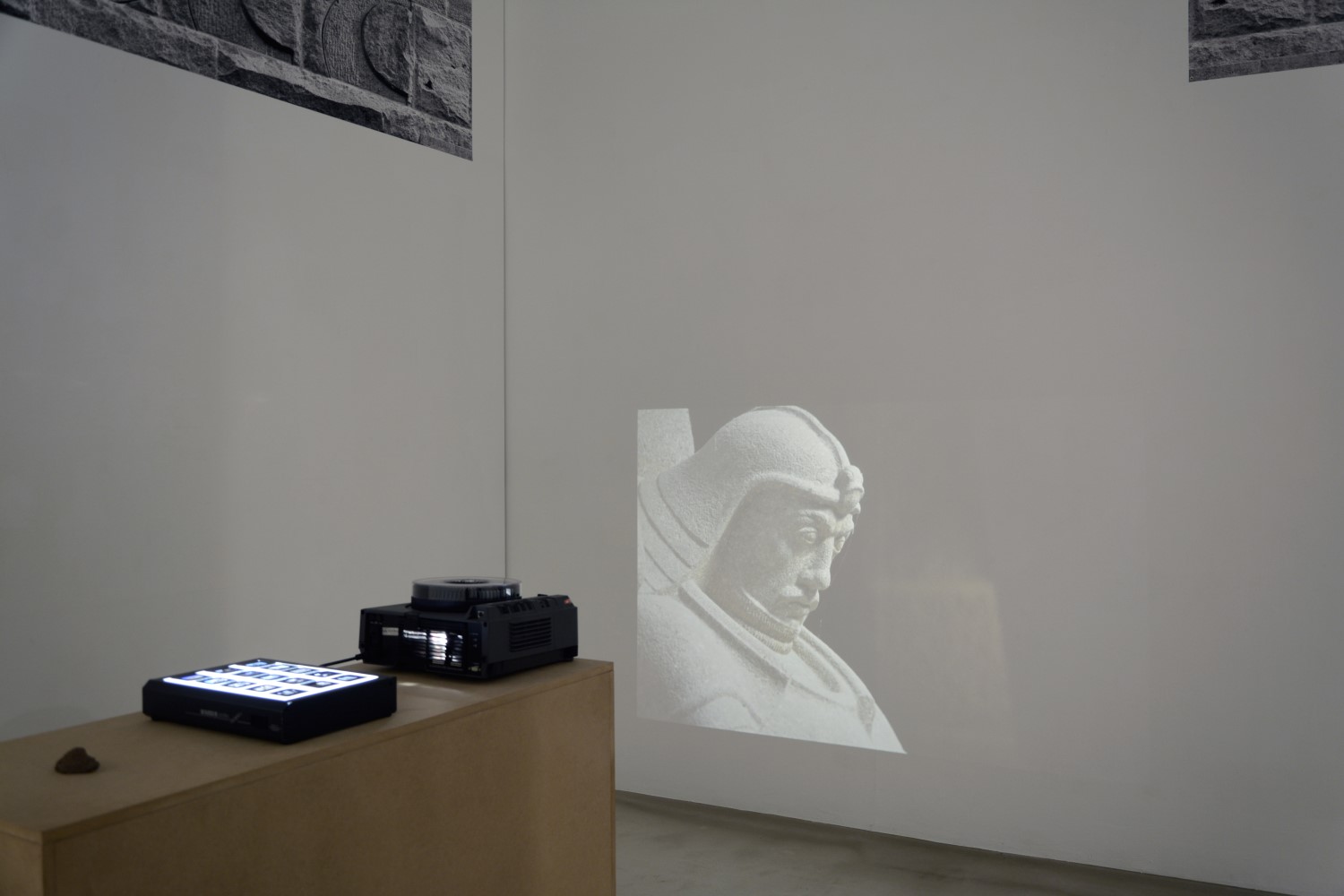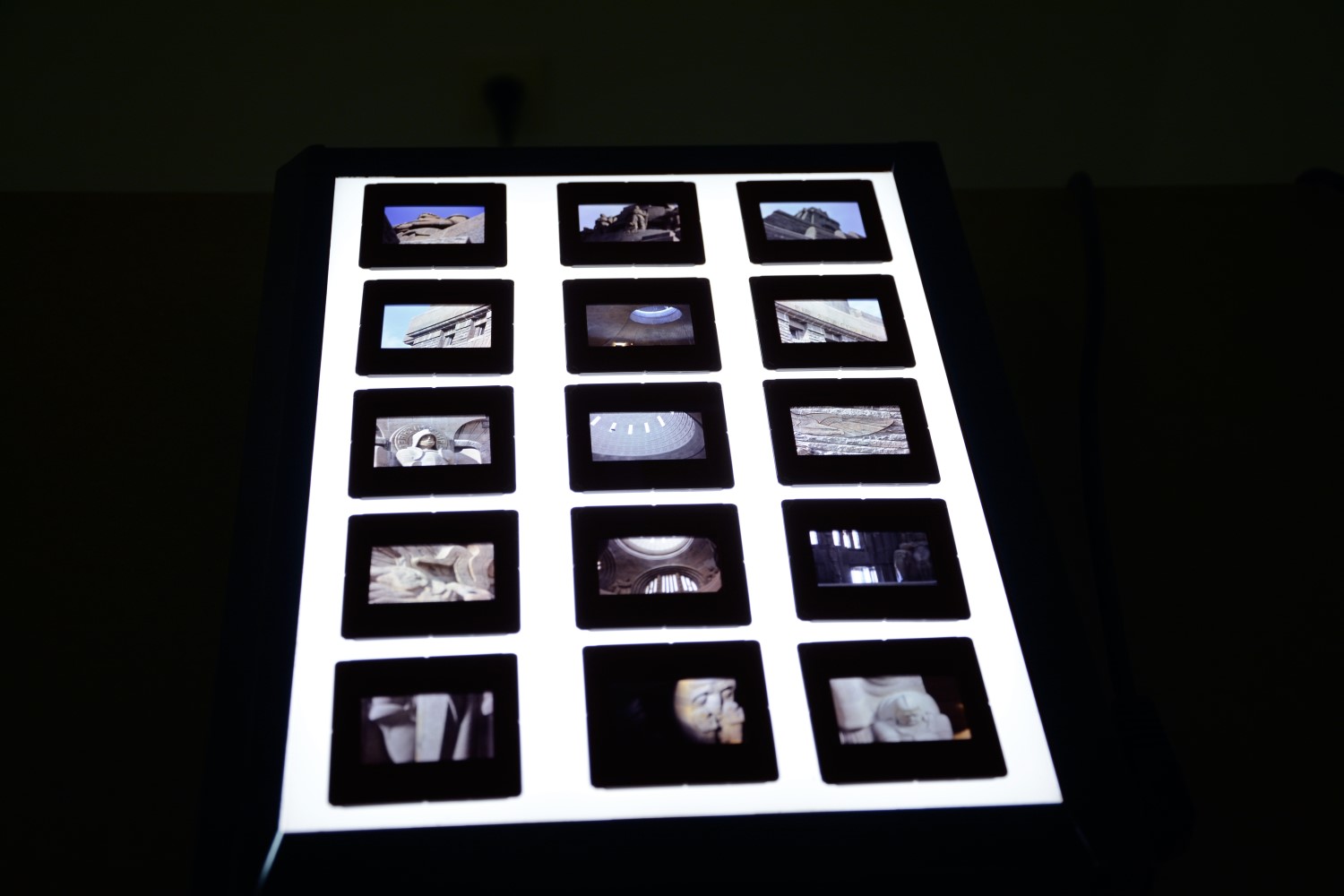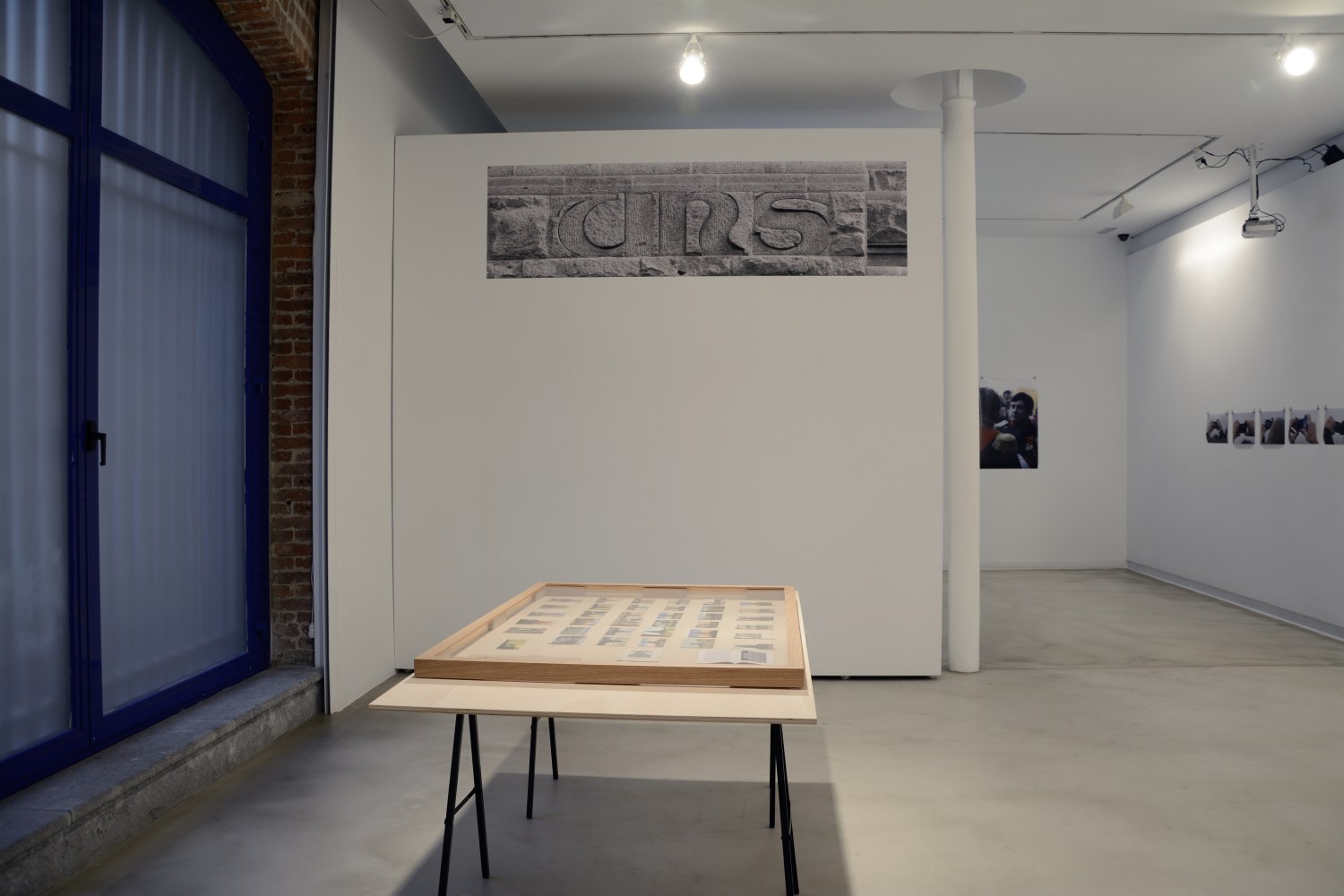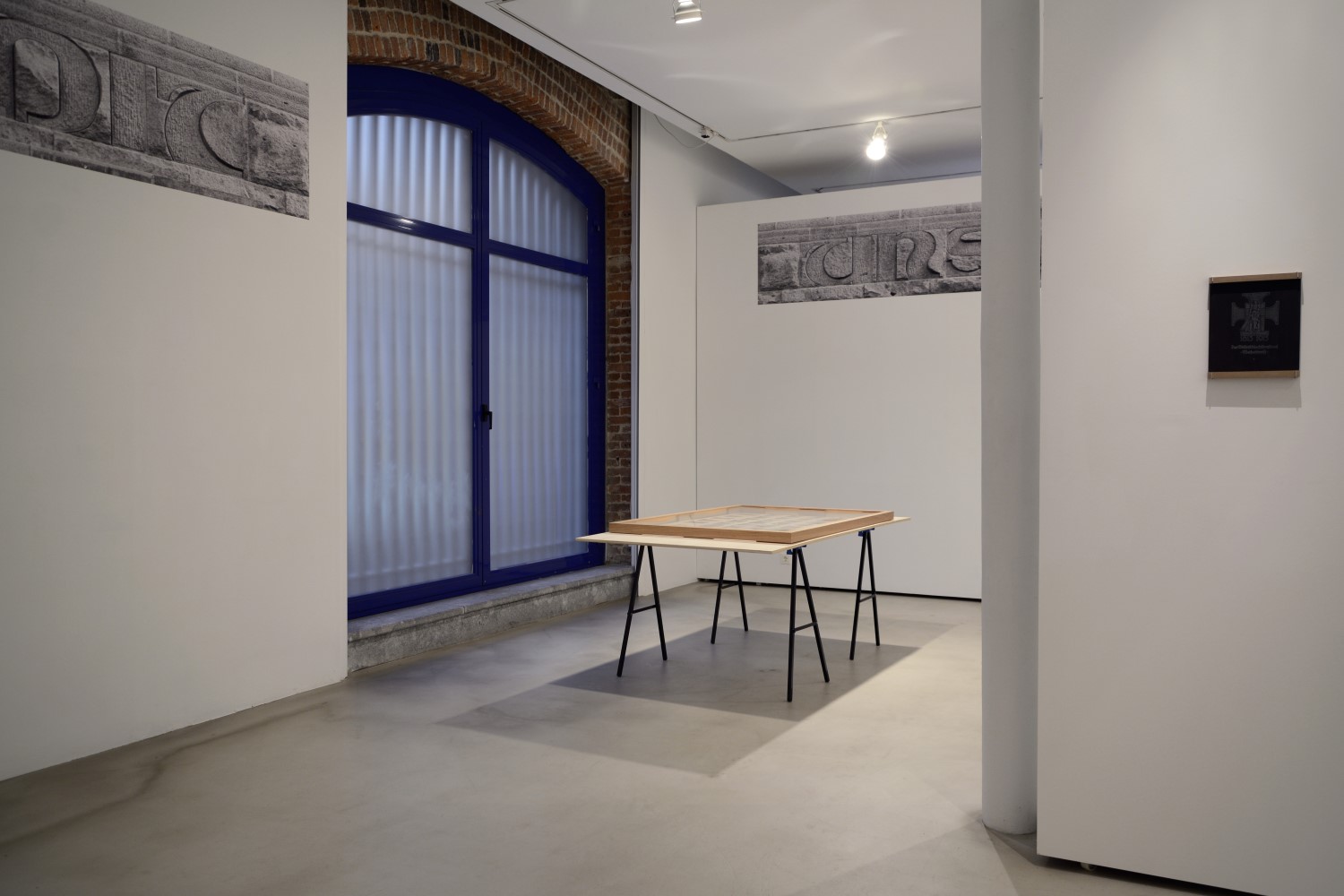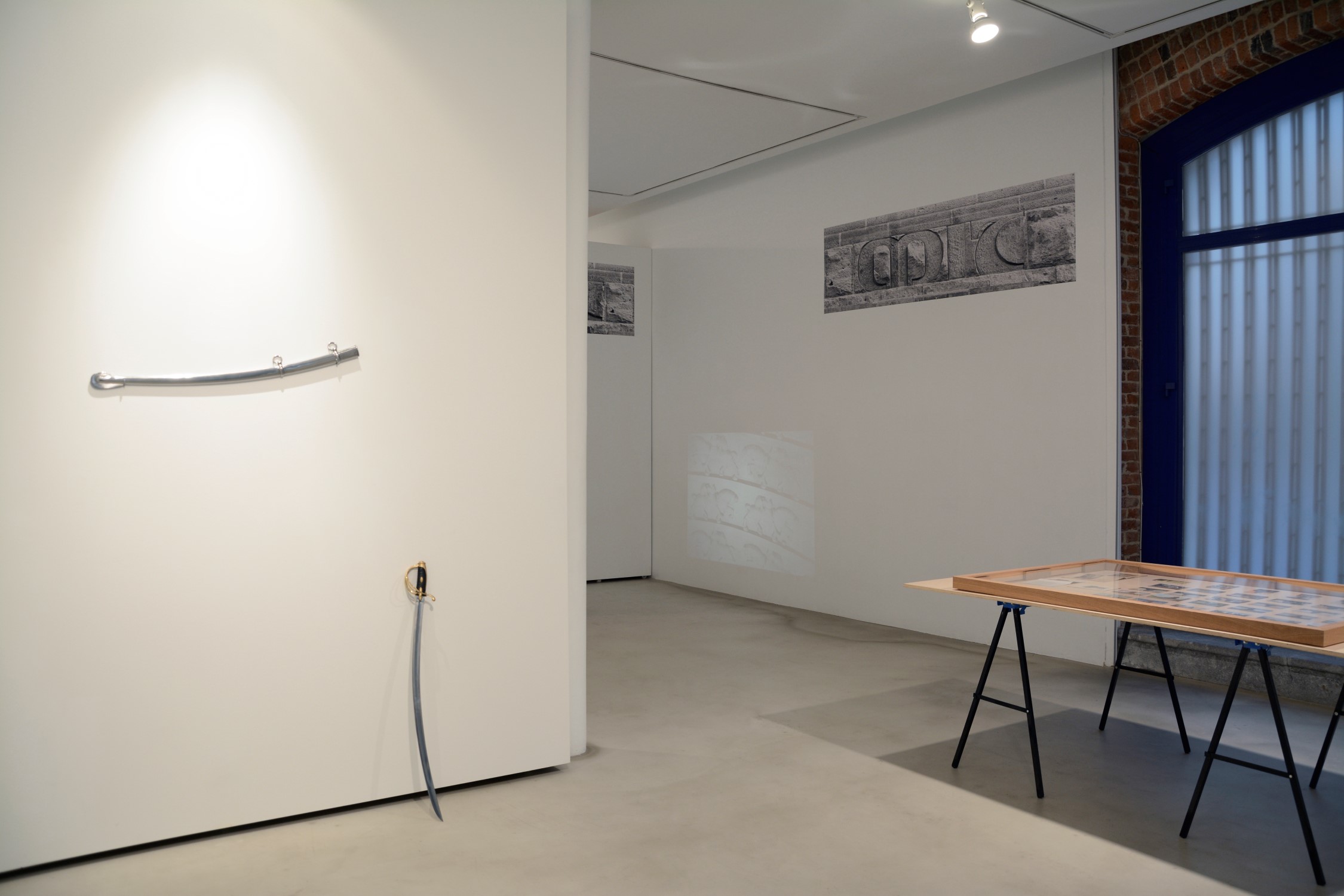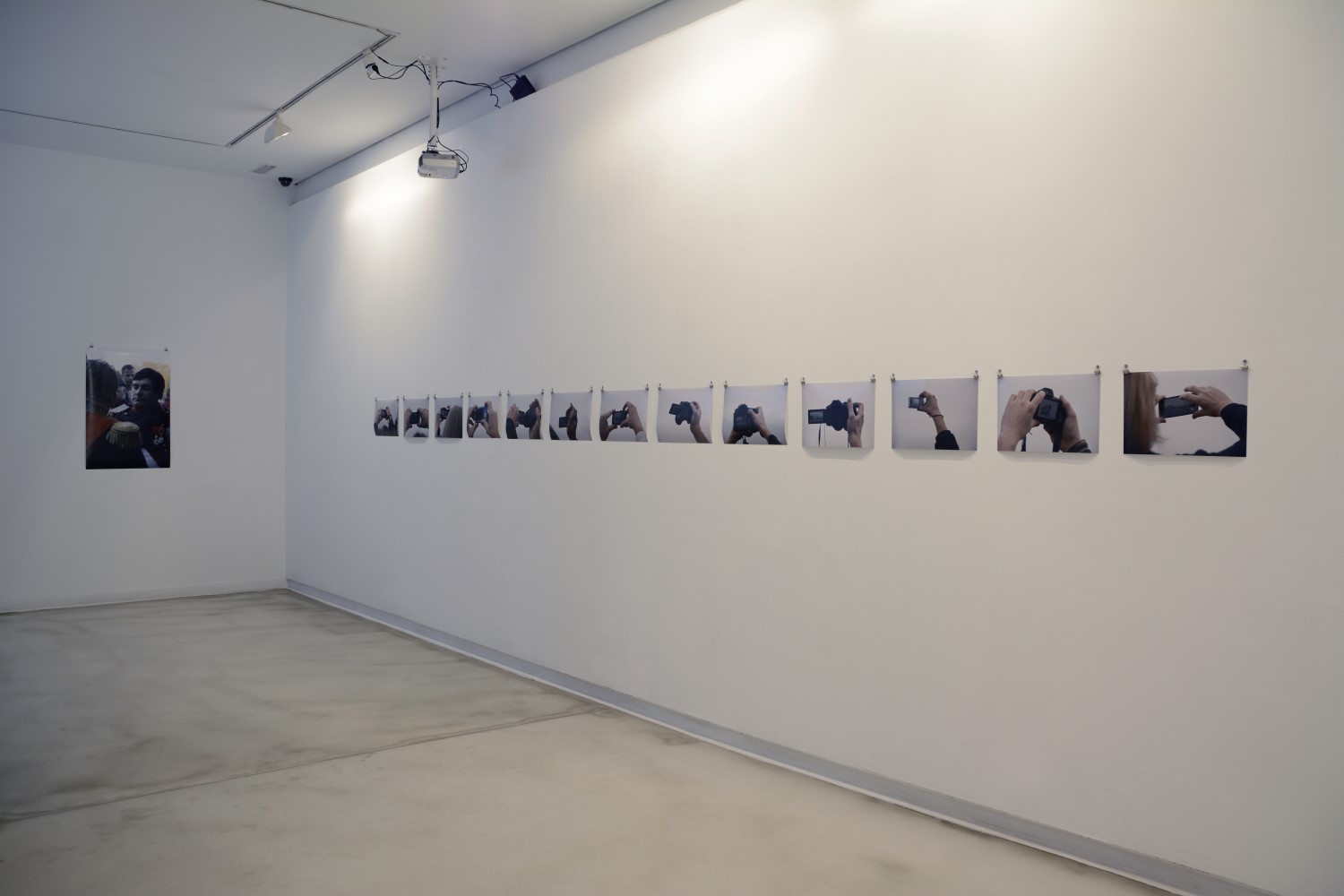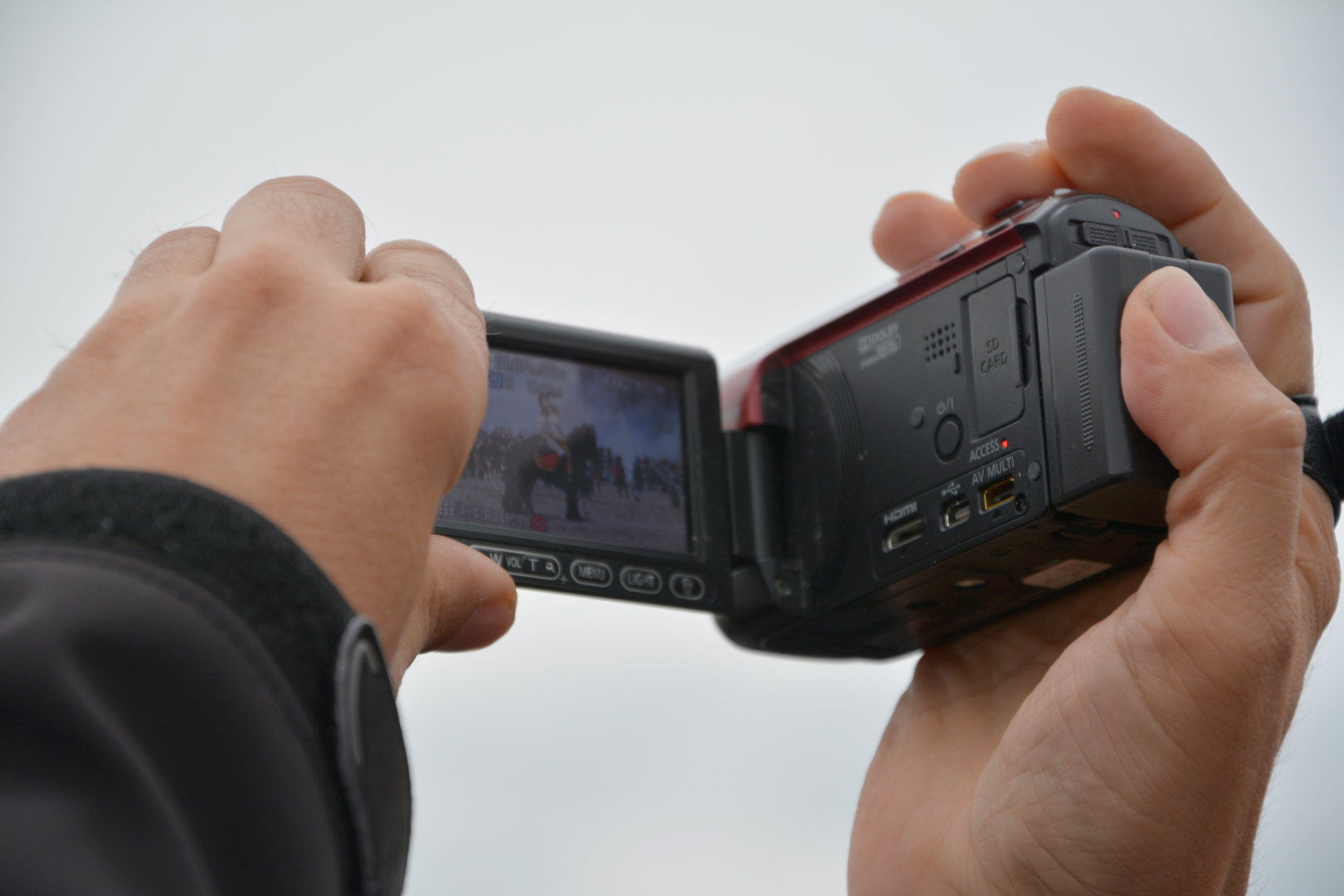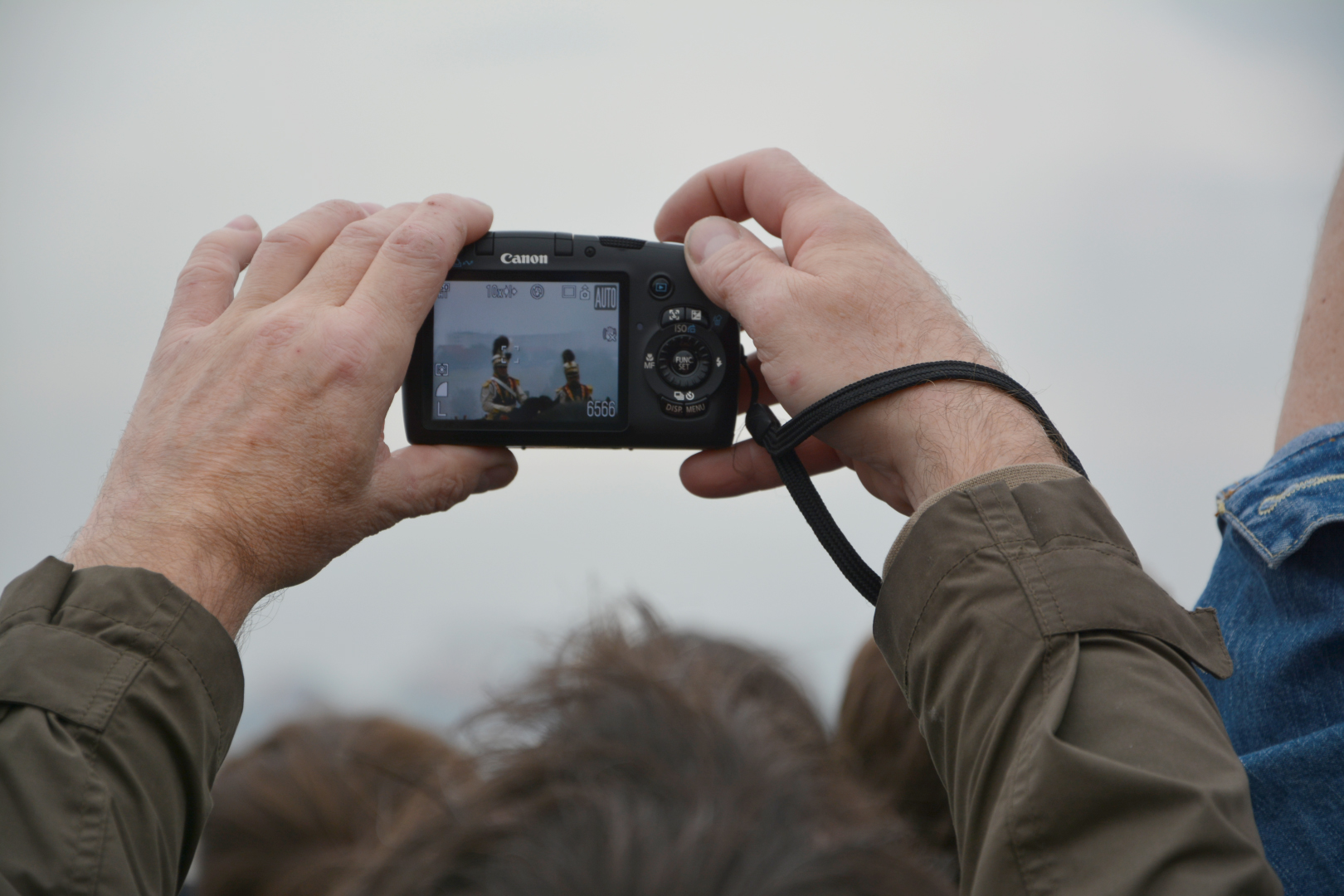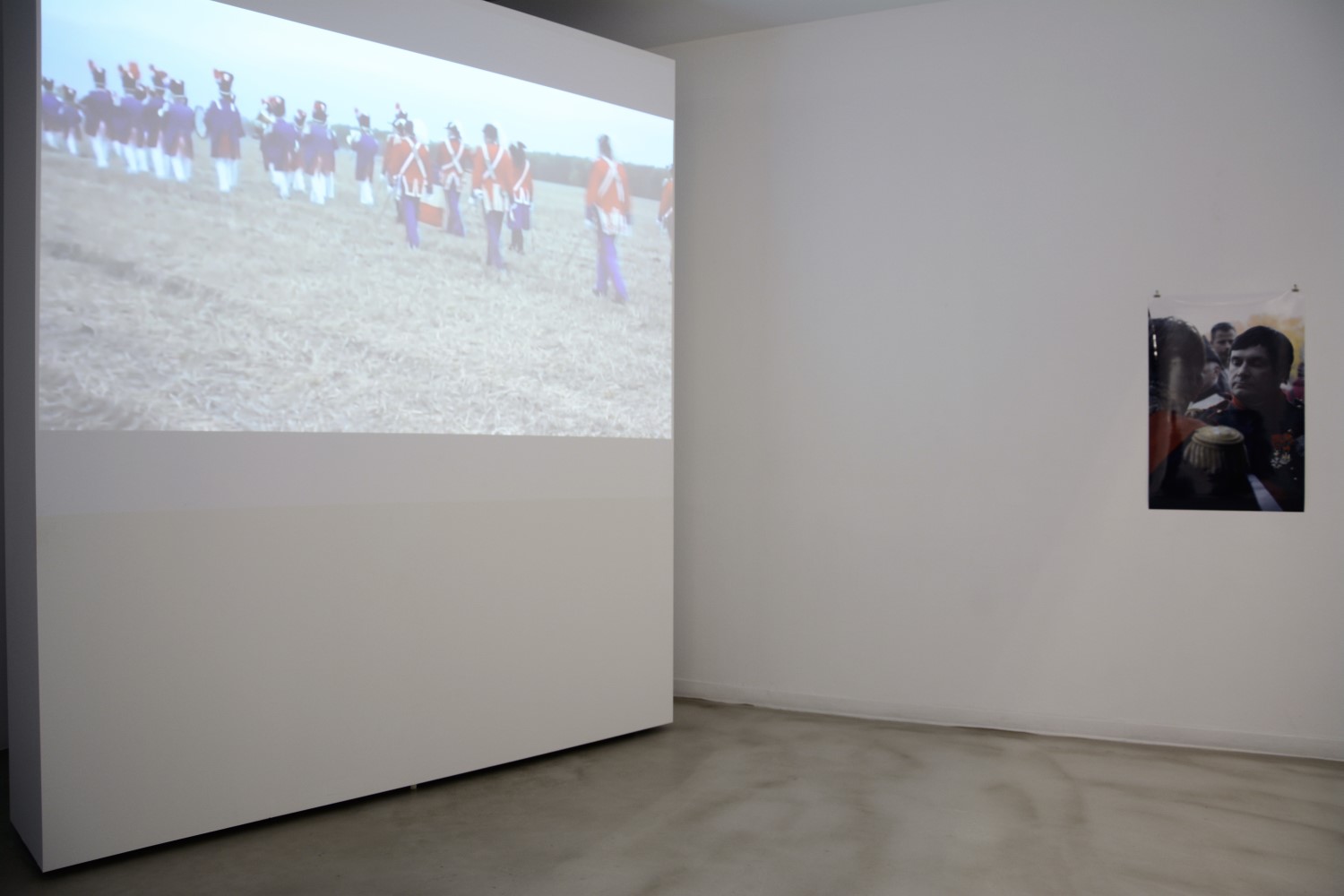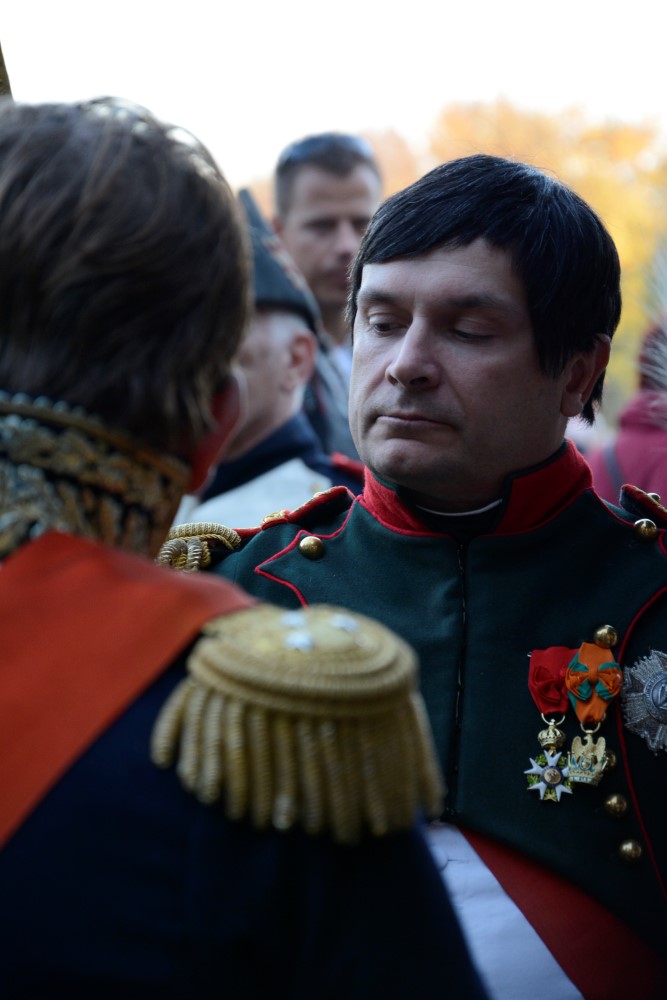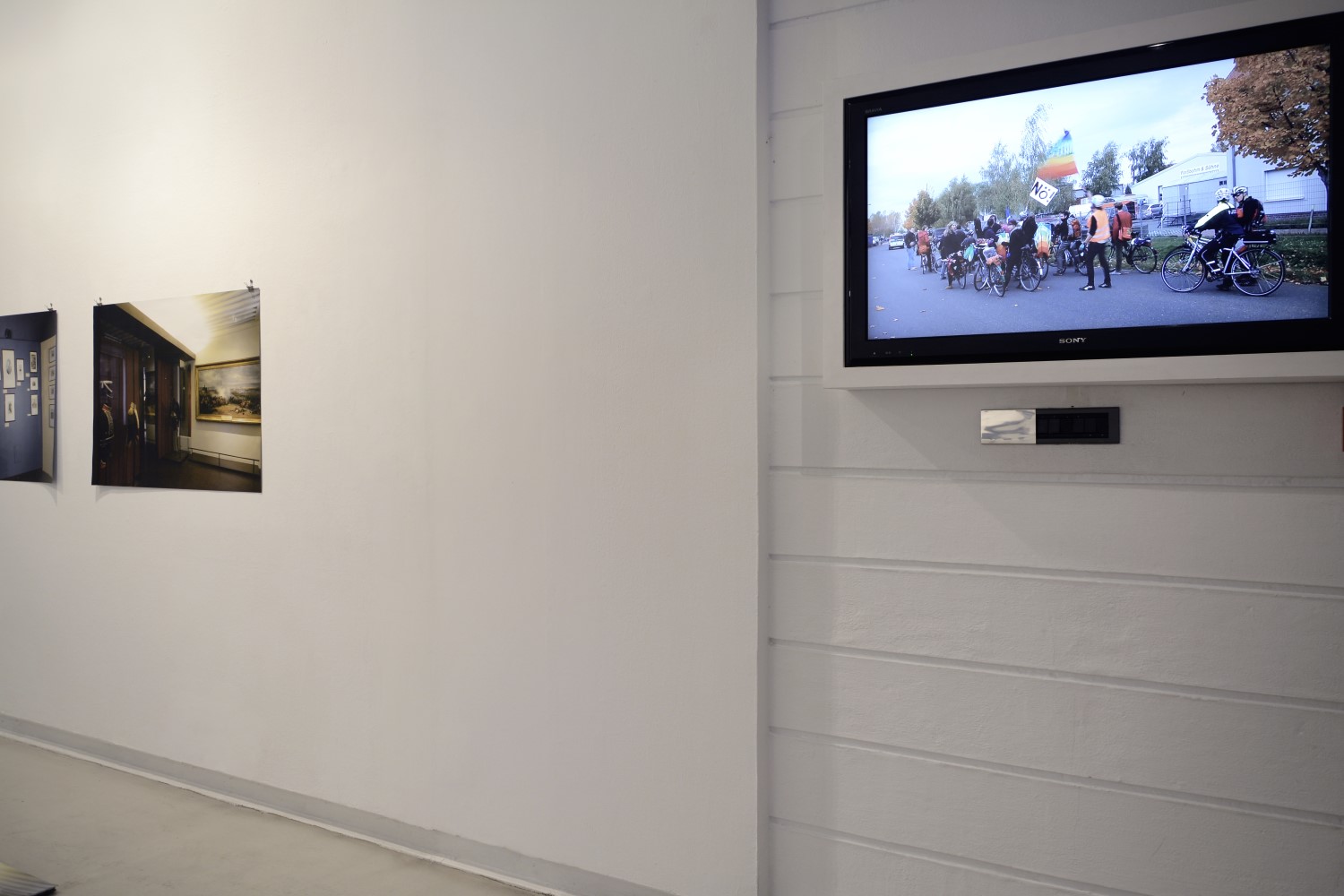18/19/2013 project analyzes the 201st anniversary of the Battle of the Nations (Leipzig, Germany, from 16 to 19 of October 1813) from three different chronological perspectives: 1813, 1913 and 2013. Each of these years forms a separate part of the exhibition; and all have been treated in a different way.
1813 / The icon.
As far as the objects from 1813 are concerned, we have used only those displayed in museums. Following the museums’ model, the exhibition presents historical relics which allow us to place the battle in a context without recounting it directly.
- Six models of posters (70 x 100 cm, to take away), in which you can see the halls dedicated to the Battle in the museums of the countries which participated in the Battle of the Nations (Sweden, France, Prussia, Austria, Poland and Russia). Thanks to them, one can see how the same historical fact is presented in each of these countries. It is an opportunity to compare different points of view, all of which depend on the historical importance attributed to the Battle by each of the participating nations.
- A photograph of Napoleon Bonaparte’s stuffed horse, “Le Vizir” (40 x 60 cm).
- A photograph of Napoleon Bonaparte’s coat and hat (40 x 60 cm).
These are the icons which tell us about Napoleon Bonaparte without showing his figure directly; the presence of the absent, together with his tomb shown in the catalogue.
- An 8-pound cannonball from 1813 (diameter of 12 cm).
- A reproduction of the painting "Le Vizir" by Pierre Martinet (beginning of the 19th century) in order to emphasize the presence of the icon.
1913 / The symbolic aspect.
In 1913, the Monument to the Battle of the Nations was erected in Leipzig, and it was at that time the largest monument in Europe. It hardly makes any reference to the Battle of 1813; instead the Monument contains symbols glorifying the Battle as one which gave rise to Germany’s unification and to “Germanity”, e.g. figures which represent Emperor Frederick Barbarossa or sculptures of Teutonic warriors around a crypt within the monument.
- 81 slides made 360º view around the Monument, from inside and outside, in general and in detailed plans. The Monument is shown in a neutral manner, leaving the “reading” of the images to the spectators, allowing them to draw their own conclusions.
- A stone from the monument and a glass cabinet with a collection of old postcards depicting the Monument. Postcards and old guidebooks to the Monument. These elements form two types of memories: the first one, a part of the original relic, contains the Monument in itself; the second, consisting of images, is more direct to the sight, but it is still a graphic representation which lets us remember the Monument.
- 3 posters in which you can read GOTT MIT UNS (God with us), a text placed at the entrance to the monument which I highlight due to its impact as a slogan.
2013 / The Real.
In order to commemorate its 200th anniversary, the Battle of the Nations was recreated in Leipzig. The scene involved more than 6000 members of history associations all around Europe and it was watched by 35000 spectators.
This simulation of the Battle becomes reality, as this is the “battle” at which I could personally be present; otherwise, I could only come closer to the original through the relics collected in the museums. What turns out to be interesting is the way in which the hundredth anniversaries were celebrated in the different eras: in 1913, with a gigantic monument dedicated to the German nation and to death, and in 2013, with an immaterial representation dedicated, according to what the speaker said, to peace.
- A replica of a light cavalry sabre, AN XI (Klingenthal 1813) model, which took part in the 2013 reconstruction of the Battle of the Nations. The sabre is a contemporary relic: similar to those in the museums, yet of today.
- 13 photographs which present the cameras of the spectators while taking pictures. On the screens of these cameras one can see the battle scenes which were being registered by the audience. The scenes are loaded with drama similar to that of certain scenes depicted in the paintings of the 1813 battle.
- A video (50 min) by the courtesy of Norbert Weise, a German video fan, downloaded from Youtube (http://youtu.be/lM-I7j2Gsfg). Following the idea of the photographs, the memory of the 200th anniversary is presented as something ephemeral (digital).
- A portrait of Napoleon Bonaparte (2013). This Napoleon is a Parisian lawyer who is currently Europe’s official Napoleon. He spends his free time going to all those reconstructions. There is an interview with him in the catalogue. In the exhibition, he is the real Napoleon Bonaparte, contrary to the “original” one, of whom there are only relics/icons left: a hat, a coat, a tomb.
More than the Battle of the Nations itself, what I am interested in are its different readings and the different ways in which the memory of the Battle was treated at each centenary.
Bilbaoarte Foundation, Spain, 2014
